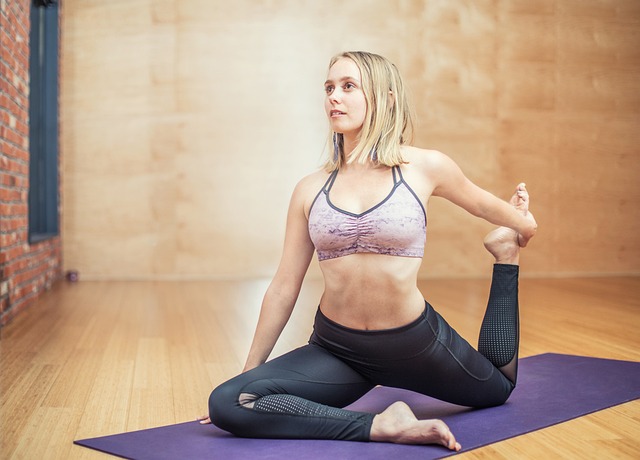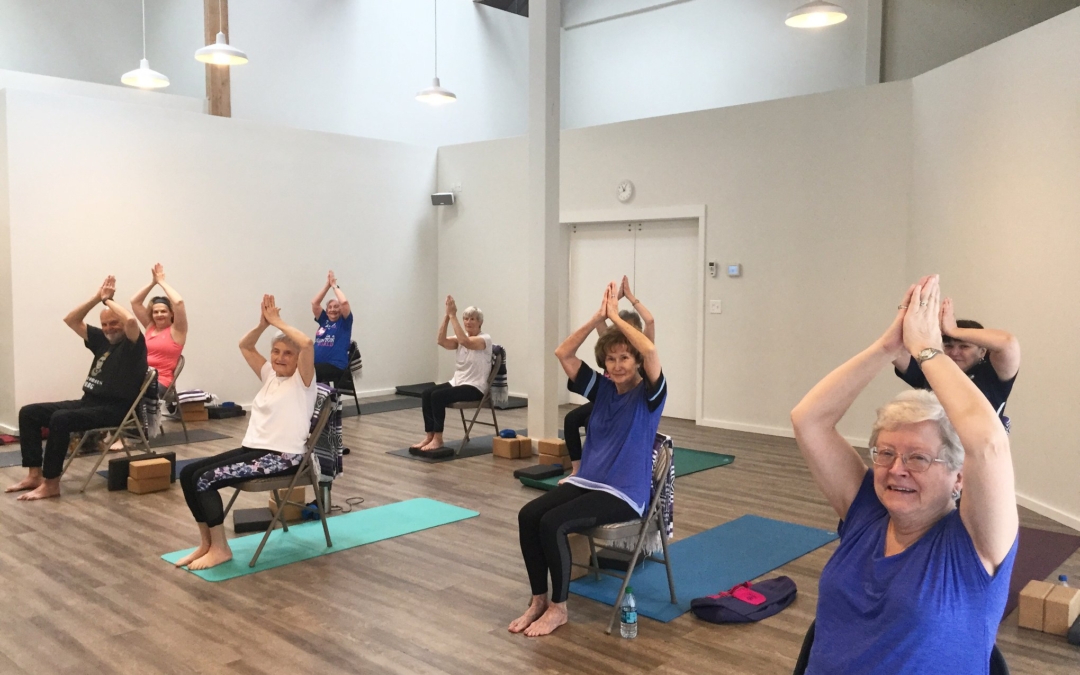
Chronic pain can significantly impact one's quality of life, making everyday activities a challenge. However, there is hope in the form of yoga therapy.
This holistic approach offers a comprehensive set of eight steps to manage chronic pain effectively. By incorporating personalized yoga routines, body alignment techniques, therapeutic props, and pain coping strategies, individuals can find relief and regain control over their lives.
With pain-specific yoga exercises, relaxation techniques, lifestyle changes, and regular follow-up, this empowering journey leads to freedom from chronic pain.
Personalized Yoga Routines
Personalized yoga routines can be effective in managing chronic pain when tailored to individual needs and abilities. The mind-body connection plays a crucial role in the alleviation of chronic pain, and yoga provides a holistic approach to cultivate this connection. By incorporating mindfulness meditation techniques into personalized yoga routines, individuals can learn to tune into their bodies and develop a deeper awareness of their pain.
Mindfulness meditation helps individuals observe their pain without judgment, allowing for a more compassionate and accepting attitude towards their condition. This practice promotes relaxation, reduces stress, and enhances overall well-being.
Additionally, personalized yoga routines can address specific areas of pain and strengthen the surrounding muscles, leading to improved flexibility and mobility.
The integration of mindfulness meditation and personalized yoga routines empowers individuals to take control of their chronic pain and find freedom in their physical and mental well-being.

Body Alignment
Body alignment is a key aspect of yoga therapy for managing chronic pain. It ensures proper posture and supports the body's natural healing process. Correct body posture is crucial for relieving pain and preventing further discomfort. When the body is properly aligned, it reduces strain on muscles, joints, and ligaments, allowing for improved mobility and flexibility.
Yoga postures or asanas are specifically designed to promote correct body alignment. These postures help to strengthen the core, improve spinal alignment, and increase body awareness. By practicing yoga regularly and focusing on proper alignment, individuals can experience the benefits of reduced pain, increased range of motion, and improved overall well-being.
Incorporating correct body alignment into yoga therapy empowers individuals to take control of their chronic pain and find freedom through self-care and mindful movement.
Therapeutic Yoga Props
Therapeutic yoga props are frequently utilized in yoga therapy for managing chronic pain to enhance the effectiveness of the practice and support individual needs. These props provide additional support and stability, allowing individuals with chronic pain to modify yoga poses and movements according to their comfort level.
Props such as bolsters, blocks, straps, and blankets can be used to provide gentle support and help maintain proper body alignment during yoga therapy sessions. They allow individuals to find a balance between challenging their bodies and avoiding further pain or injury.
Pain Coping Strategies
To effectively manage chronic pain through yoga therapy, it is important to employ various pain coping strategies. These strategies can help individuals develop a better understanding of their pain, reduce its impact, and improve their overall well-being.
Here are three effective pain coping strategies that can be integrated into a yoga therapy practice:

- Mindfulness meditation: By cultivating present moment awareness and acceptance, mindfulness meditation can help individuals observe their pain without judgment. This can lead to a reduction in pain intensity and an increased ability to cope with discomfort.
- Cognitive behavioral therapy: This psychotherapeutic approach helps individuals identify and challenge negative thought patterns related to pain. By altering these thoughts and replacing them with more positive and empowering ones, individuals can enhance their pain coping skills and improve their overall quality of life.
- Breathing techniques: Deep, focused breathing can help individuals relax their bodies and calm their minds. By directing their attention to their breath, individuals can reduce stress and tension, which can alleviate pain and promote a sense of ease and freedom.
Pain-Specific Yoga Exercises
Pain-specific yoga exercises can target and address the specific areas of discomfort or pain experienced by individuals with chronic pain. These exercises are designed to provide relief and promote healing in a gentle and mindful way. By combining pain management techniques with the principles of yoga and mindfulness, individuals can find relief from their chronic pain and improve their overall well-being.
Pain-specific yoga exercises focus on stretching and strengthening the muscles surrounding the painful area, increasing flexibility, and improving posture. These exercises also help to release tension and reduce inflammation, which can contribute to pain. Additionally, yoga and mindfulness techniques can help individuals develop a greater awareness of their bodies and their pain, allowing them to better manage and cope with their symptoms.
It is important to remember that each person's experience with chronic pain is unique, and what works for one individual may not work for another. Therefore, it is recommended to consult with a qualified yoga therapist or healthcare professional to develop a personalized pain-specific yoga routine that addresses individual needs and limitations.
Relaxation Techniques
Relaxation techniques play a crucial role in managing chronic pain with yoga therapy.
Breathing exercises for relaxation help calm the mind and promote a sense of inner peace, allowing individuals to better cope with their pain.
Guided imagery techniques can also be used to create a soothing and calming mental landscape, providing a much-needed respite from the challenges of chronic pain.
Breathing Exercises for Relaxation
Implementing proper breathing techniques is an essential component in managing chronic pain through yoga therapy. Breathing exercises not only help in relaxation but also promote mental clarity and overall well-being.

Here are three powerful techniques that can help you find relief and freedom from chronic pain:
- Deep Breathing: This technique involves taking slow, deep breaths, focusing on fully expanding your diaphragm. Deep breathing increases oxygen flow to the muscles, reduces tension, and improves relaxation.
- Meditation Techniques: Incorporating meditation techniques, such as mindfulness meditation or guided imagery, can help redirect your focus away from pain and towards a state of calmness and tranquility. By cultivating present-moment awareness, you can better manage your pain and reduce its impact on your daily life.
- Alternate Nostril Breathing: This technique involves inhaling and exhaling through alternate nostrils. It helps balance the body's energy, reduces stress, and calms the mind.
Guided Imagery for Calm
Continuing from the previous subtopic on breathing exercises, incorporating guided imagery for calmness and relaxation is an effective technique in managing chronic pain through yoga therapy.
Guided imagery involves using mental visualization to create a peaceful and tranquil environment within the mind. By tapping into the power of the imagination, individuals can visualize themselves in a serene setting, such as a beautiful beach or a peaceful forest.
This mental escape allows the body to relax and the mind to focus on positive and soothing images, helping to reduce stress and promote a sense of calm. Guided imagery can be practiced alongside deep breathing exercises, enhancing its benefits for stress reduction and pain management.
Lifestyle Changes
To address chronic pain effectively, individuals can make necessary adjustments to their daily routines and habits. Lifestyle changes play a crucial role in managing chronic pain and improving overall well-being. Here are three key changes that can make a significant impact:
- Diet Modification: A healthy diet can help reduce inflammation and promote healing. Incorporating anti-inflammatory foods such as leafy greens, fatty fish, and berries can provide essential nutrients and support pain management.
- Stress Reduction: Chronic pain is often accompanied by increased stress levels, which can exacerbate the symptoms. Engaging in stress-reducing activities like meditation, deep breathing exercises, and gentle yoga can help calm the mind, relax the body, and alleviate pain.
- Regular Exercise: Physical activity is vital for managing chronic pain. Low-impact exercises like walking, swimming, or yoga can improve strength, flexibility, and overall fitness, leading to reduced pain and improved quality of life.
Follow-Up and Maintenance
Follow-up and maintenance are crucial aspects of managing chronic pain with yoga therapy. Long-term pain management requires a commitment to sustaining a regular yoga practice.
By incorporating yoga into daily life and making it a priority, individuals can experience the ongoing benefits of improved flexibility, strength, and pain reduction.

Regular check-ins with a yoga therapist or instructor can provide guidance, support, and adjustments to ensure the practice remains effective and tailored to individual needs.
Long-Term Pain Management
After the initial treatment phase, it is important to develop a comprehensive plan for sustained pain management through regular follow-up and maintenance. Long-term pain management involves a holistic approach that addresses the physical, mental, and emotional aspects of chronic pain. Here are three key components to consider:
- Incorporating alternative therapies: In addition to traditional medical interventions, exploring alternative therapies such as acupuncture, chiropractic treatment, or herbal remedies can provide additional relief and support in managing chronic pain.
- Utilizing psychological support: Chronic pain can often lead to emotional distress, anxiety, and depression. Engaging in therapy or counseling can help individuals cope with the emotional toll of living with chronic pain and develop effective strategies to manage their symptoms.
- Maintaining a healthy lifestyle: Adopting a balanced diet, engaging in regular exercise, and practicing stress-reducing techniques like yoga or meditation can contribute to overall well-being and help manage chronic pain in the long term.
Sustaining Yoga Practice
Continuing with the comprehensive plan for long-term pain management, it is essential to establish a consistent and ongoing yoga practice as a key component of follow-up and maintenance.
However, maintaining consistency in yoga practice can present challenges for individuals dealing with chronic pain. It is crucial to address these challenges and find ways to stay motivated.
One way to overcome consistency challenges is by setting realistic goals and creating a schedule that works for you. Additionally, finding a supportive community or joining a yoga class can provide accountability and encouragement.
Motivational factors such as tracking progress, celebrating small victories, and focusing on the positive impact that yoga has on overall well-being can also help sustain the practice.
Frequently Asked Questions
Can Yoga Therapy Completely Cure Chronic Pain?
While yoga therapy has shown promising results in managing chronic pain, it is important to note that it may not completely cure it. However, the incorporation of mindfulness in yoga therapy can provide significant relief and improve overall well-being.

How Long Does It Typically Take to See Improvements in Pain Levels With Yoga Therapy?
Improvement timeframes for pain levels with yoga therapy can vary depending on individual factors, such as the severity of the chronic pain and consistency of practice. An effectiveness evaluation is recommended to assess progress accurately.
Are There Any Potential Risks or Side Effects of Practicing Yoga Therapy for Chronic Pain?
When considering the potential risks and side effects of practicing yoga therapy for chronic pain, it is important to note that while yoga is generally safe, individuals with certain medical conditions or physical limitations may need to exercise caution and consult with a healthcare professional before starting any new exercise program. It is always recommended to listen to your body, start slowly, and modify poses as needed to avoid exacerbating pain or causing injury.
Yes, yoga therapy can be used in conjunction with other forms of pain management such as medication and physical therapy. Combining yoga therapy with other methods can provide additional benefits and support in managing chronic pain.
Are There Any Specific Medical Conditions or Injuries That May Make Someone Ineligible for Yoga Therapy for Chronic Pain?
Certain medical conditions or injuries may make someone ineligible for yoga therapy for chronic pain. It is important to consider medical contraindications and consult with healthcare professionals to explore alternative therapies that may be more suitable.
 Business & FinanceHealth & MedicineTechnologyLifestyle & CultureScience & EnvironmentWorld NewsPrivacy PolicyTerms And Conditions
Business & FinanceHealth & MedicineTechnologyLifestyle & CultureScience & EnvironmentWorld NewsPrivacy PolicyTerms And Conditions
